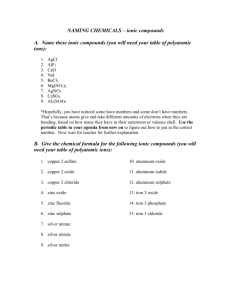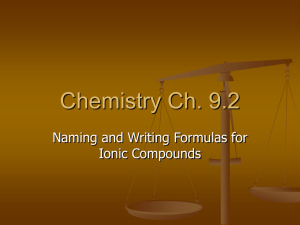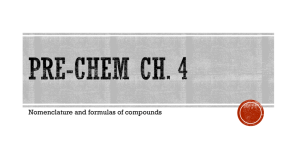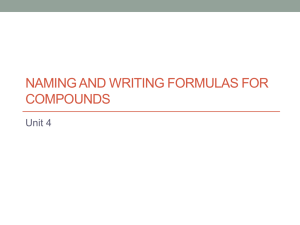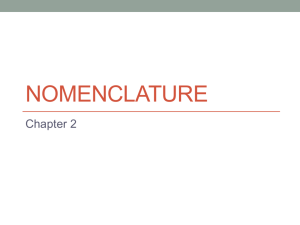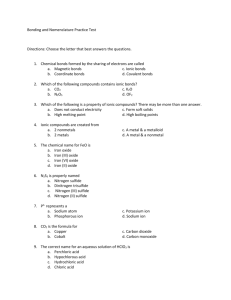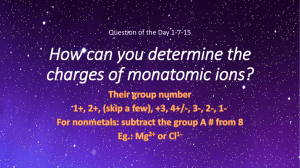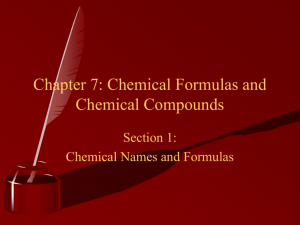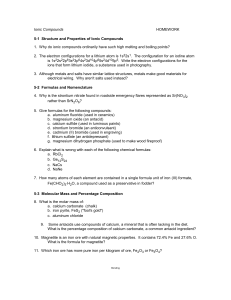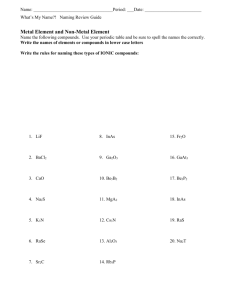Ionic Compounds - La Salle University
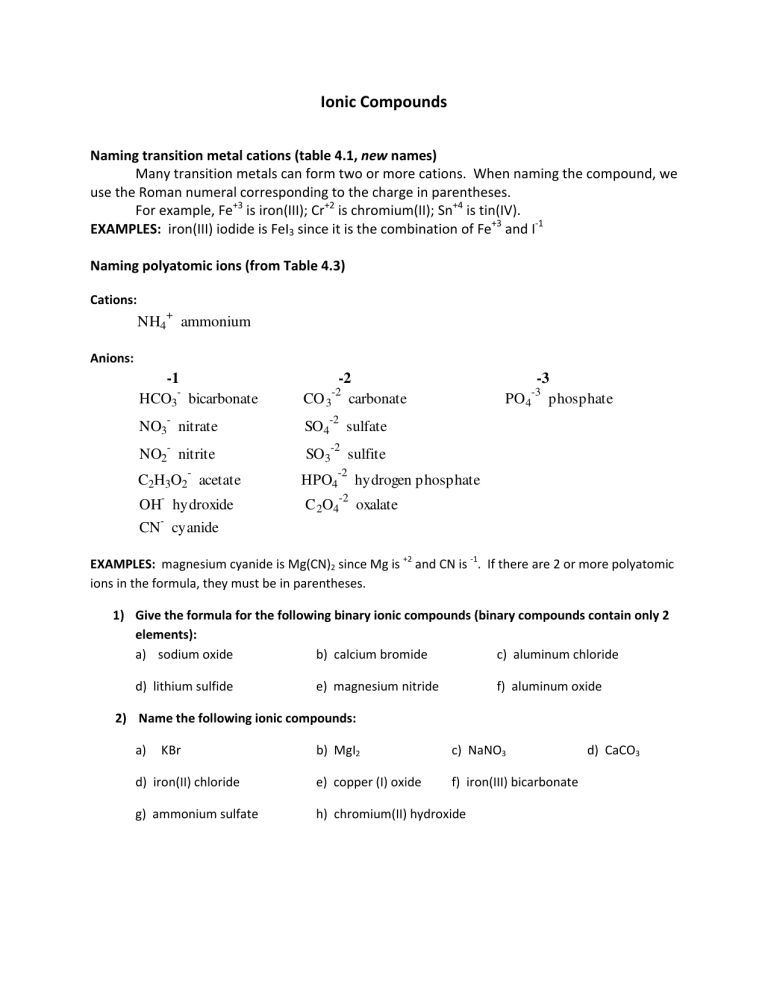
Ionic Compounds
Naming transition metal cations (table 4.1, new names)
Many transition metals can form two or more cations. When naming the compound, we use the Roman numeral corresponding to the charge in parentheses.
For example, Fe
+3
is iron(III); Cr
+2
is chromium(II); Sn
+4
is tin(IV).
EXAMPLES: iron(III) iodide is FeI
3
since it is the combination of Fe
+3
and I
-1
Naming polyatomic ions (from Table 4.3)
Cations:
NH
4
+
ammonium
Anions:
-1 -2 -3
HCO
3
-
bicarbonate CO
3
-2
carbonate PO
4
-3
phosphate
NO
3
-
nitrate SO
4
-2
sulfate
NO
2
-
nitrite SO
3
-2
sulfite
C
2
H
3
O
2
-
acetate HPO
4
-2
hydrogen phosphate
OH
-
hydroxide C
2
O
4
-2
oxalate
CN
-
cyanide
EXAMPLES: magnesium cyanide is Mg(CN)
2
since Mg is
+2
and CN is
-1
. If there are 2 or more polyatomic ions in the formula, they must be in parentheses.
1) Give the formula for the following binary ionic compounds (binary compounds contain only 2 elements): a) sodium oxide b) calcium bromide c) aluminum chloride d) lithium sulfide e) magnesium nitride f) aluminum oxide
2) Name the following ionic compounds: a) KBr b) MgI
2 d) iron(II) chloride e) copper (I) oxide c) NaNO h) chromium(II) hydroxide
3 f) iron(III) bicarbonate d) CaCO
3 g) ammonium sulfate

